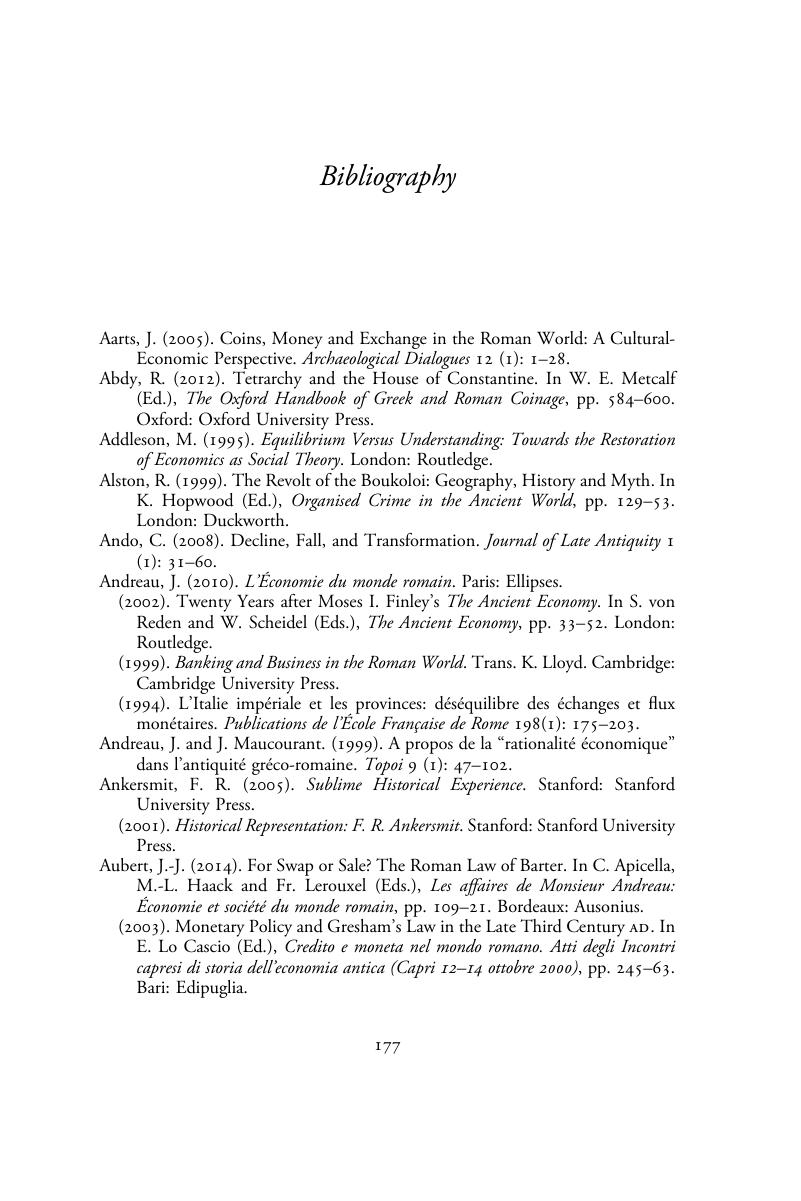Book contents
- Economic Theory and the Roman Monetary Economy
- Economic Theory and the Roman Monetary Economy
- Copyright page
- Dedication
- Contents
- List of Figures
- Preface
- Acknowledgments
- Chapter 1 On Writing Roman Economic History
- Chapter 2 Embedding Contexts of Roman Money
- Chapter 3 Evidence and Theory
- Chapter 4 Rationality, Purposefulness and Action
- Chapter 5 Money Quantity and Quality
- Chapter 6 Understanding Money Use and Value
- Conclusion
- Bibliography
- Index
- References
Bibliography
Published online by Cambridge University Press: 03 February 2020
- Economic Theory and the Roman Monetary Economy
- Economic Theory and the Roman Monetary Economy
- Copyright page
- Dedication
- Contents
- List of Figures
- Preface
- Acknowledgments
- Chapter 1 On Writing Roman Economic History
- Chapter 2 Embedding Contexts of Roman Money
- Chapter 3 Evidence and Theory
- Chapter 4 Rationality, Purposefulness and Action
- Chapter 5 Money Quantity and Quality
- Chapter 6 Understanding Money Use and Value
- Conclusion
- Bibliography
- Index
- References
Summary

- Type
- Chapter
- Information
- Economic Theory and the Roman Monetary Economy , pp. 177 - 203Publisher: Cambridge University PressPrint publication year: 2020

